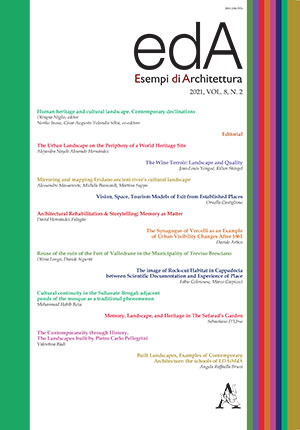Estratto da
ESEMPI DI ARCHITETTURA
International Journal of Architecture and Engineering
BUILT LANDSCAPES, EXAMPLES OF CONTEMPORARY ARCHITECTURE: THE SCHOOLS OF LDAiMdA
ESEMPI DI ARCHITETTURA
International Journal of Architecture and Engineering
BUILT LANDSCAPES, EXAMPLES OF CONTEMPORARY ARCHITECTURE: THE SCHOOLS OF LDAiMdA

The relationship with pre-existence and memory has pervaded the history of modern and contemporary architecture. From Giovan Battista Piranesi to the present day, theoretical thought on architecture has been confronted with heritage, assuming positions of continuity or discontinuity.The word landscape takes on various meanings today. The objective of all researchers is to protect it, but above all to transform it through the project with respect for history, memory and tradition.Today, communities need to reflect themselves in meaningful places where they can meet and recognize themselves. Among these places there are schools. The school is among the most important buildings in the city. The transmission of knowledge of the value of our heritage must begin with the new generations. Landscape education must take place in well-designed school buildings. There must always be spaces for outdoor teaching in school buildings. The quality of the outdoor space for teaching must be at the center of design research. Learning also takes place through creative work in open spaces in relation to the landscape in which the school building is located. The discovery and interpretation of the landscape constitute a very rich formative experience. At the beginning of the 20th century outdoor schools were built in the green areas of Rome with wooden and masonry pavilions where each classroom corresponded to an equal space next to the open air.Some projects of contemporary schools are the result of research on the quality of outdoor space.Among these, there are the school complexes designed by LDAiMdA architects. Their school complexes are like villages of houses. They establish a relationship with the territory through the use of a predominant figure in the composition. They prefer the use of materials from the earth, wood and stone, and local construction techniques.Keywords: Heritage, Landscape, Contemporary school.
| pagine: | 255-261 |
| DOI: | 10.4399/978882553987513 |
| data pubblicazione: | Dicembre 2020 |
| editore: | Aracne |








